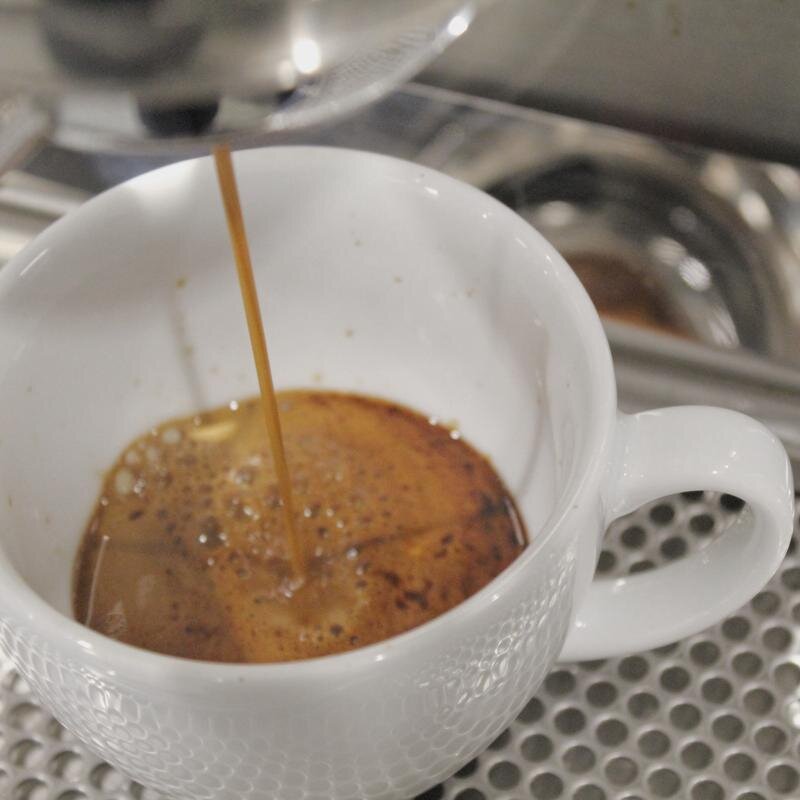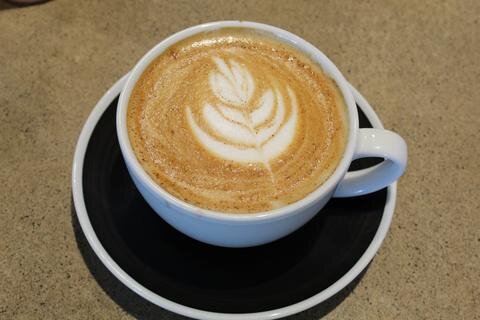
Where Does Coffee Come From? Part 4- Extraction
Where does a good cup of coffee come from? Many of us got our start in brewing by putting a filter and pre-ground coffee into our drip brewer and pressing the ‘start’ button. While that’s not the worst place to start, a traditional drip coffee maker is not exactly ideal to get the most of out of your coffee. What makes some brew methods better at extraction? And what is extraction? This blog post is the fourth in a series describing your coffee’s journey from farm to cup. We will cover specific brew methods in future blog posts, but here we will attempt to unpack and uncomplicate the idea of extraction itself.
Extraction: A Definition
So, what is coffee extraction, anyway? Using the word ‘extraction’ to describe one’s morning cup of coffee might sound pretentious or complicated, but it’s actually not! It’s really just a more exact term for ‘brewing.’ Extraction describes the process of hot water removing (extracting) all of the soluble goodness your coffee beans have to offer. Whether it’s espresso, pourover, French press, or any other method of brewing coffee-without extraction, you don’t get coffee.
Simply put, extraction takes place when water draws out the flavors from ground coffee. However, extraction tends to be easier to explain than it is to accomplish. The primary objective in coffee extraction is balance, meaning one must avoid both over-extracting (getting too much out of the coffee grounds) or under-extracting (not getting enough) his or her coffee. Balance is the Holy Grail when it comes to extraction, and it is our best friend when making coffee!
When tasting coffee most consumers desire a smooth, sweet, and mild acidity in the flavors of their coffee, even if they do not use these particular words to describe it. Most desire their coffee to lack sourness, bitterness, saltiness, or any other unpleasant flavors. Over and under-extraction give us these undesirable flavors, which is why it’s important to know what that means and how to avoid it.

Under-Extraction
When a coffee is under-extracted, this simply means that the water has been cut short of extracting all those delicious and sweet flavors from the coffee. The hot water and coffee must spend enough time together in brewing that the right soluble components of the coffee makes it into the cup.
One way to look at it is paralleling the tastes of your extracted coffee with that of a fruit like a banana. We’ve all peeled a banana and taken a bite to only realize it has definitely not reached the point of ripeness we enjoy. There’s a distinct lack of sweetness, and this is because the level of starch is much higher in the carbohydrate content in underripe bananas. As the banana ripens, that resistant starch turns into sugar as the carbohydrates continue to break down. And we all know that when a banana becomes softer and tenderer in texture and the yellow peel has formed a scattered array of browning spots, it is most likely at peak ripeness. In the same way, we want our coffee to reach that desired “ripeness” in extraction.
Under-extracted coffee is practically devoid of any sweetness and tastes sour and even briny at times. It should be mentioned that sourness is not synonymous with acidity. Just like in fruit or wine, acidity is good. The sourness found in under-extracted coffee is not good. Along with undesirable sourness wrapping around your tongue and no pleasant aftertaste, these variables should certainly indicate an under-extraction.
Over-Extraction
When a coffee is over-extracted, the coffee has been “overspent” if you will and the ground coffee is spent of all its potentially decadent flavors. By this we mean that too many soluble components have been pulled out, or that the water has spent too much time with the good soluble components and spoiled the flavor.
Often times it is easy to mix up the different indicators of under-extraction and over-extraction. Some distinct differences in over-extraction can be likened to leaving a black tea bag in hot water for way too long. The flavor is usually bitter, drying out the tongue, and unsatisfying to say the least. Indicators of over-extracted coffee is bitter, as opposed to sour, with a sharp bite, astringency, a very unpleasant dryness, and a dull lack of juicy goodness/flavor. Many people believe coffee is bitter by default. Many times this can be because of the caffeine, a very dark roast, and, of course, poor extraction. Bitterness is present in coffee naturally, but by manipulating the extraction variables, we can avoid bitterness and end up with a delicious coffee. Through achieving that, we achieve a well-balanced even extraction.
The Variables
A myriad of different factors come into play when extracting coffee. The roast, grind, water temperature, and time are the predominant components we, as the brewers, have the capability of manipulating for a better extraction. On two sides of the spectrum, the middle being balanced, we have over- and under-extracted coffee. If you’ve ever taken a sip of coffee to then react by puckering your lips or immediately reaching for water to rinse out that lingering astringent aftertaste, chances are you’ve tasted either of these poor extractions.
Exact Extraction
Perfect extraction is seldom attainable if at all, but there are many different ways we can taste-test and manipulate extraction to procure that beautifully balanced cup of coffee we’re looking for. This takes some time and effort, but the reward is oh so fulfilling.

So…what is a well-extracted coffee? What does it taste like? Well, in short, well-extracted coffee is everything you could ever hope and wish for in your coffee. Without sounding too radical and complicated, well-extracted coffee is rich in sweetness, juiciness, evenness, and, honestly, just deliciousness. A well-extracted coffee is just like biting into a perfectly ripened piece of fruit. There’s a viscosity, lushness, and smoothness in the flavors- even a “cleaner” and more refined taste that makes it much simpler in pinpointing what sort of flavor notes are being experience; but despite the specific flavor notes you might be able to pull out, the true miracle behind a well-extracted coffee is the balance. The complexity, sweetness, and perfect balance between acidity and tartness is one of the reasons why you’ll see a barista slaving over “dialing in” his/her extraction of espresso. Some might even argue it’s how they wake up in the morning. Just as discussed at the beginning of this blog, a well-balanced extraction is exactly what we’re looking for no matter what form of brewing technique is used.
Though the factors and variables are many and the complexity can be vast in the process of making coffee, achieving a well-balanced extraction of coffee is the end goal. And it’s a goal certainly worth fighting for.
